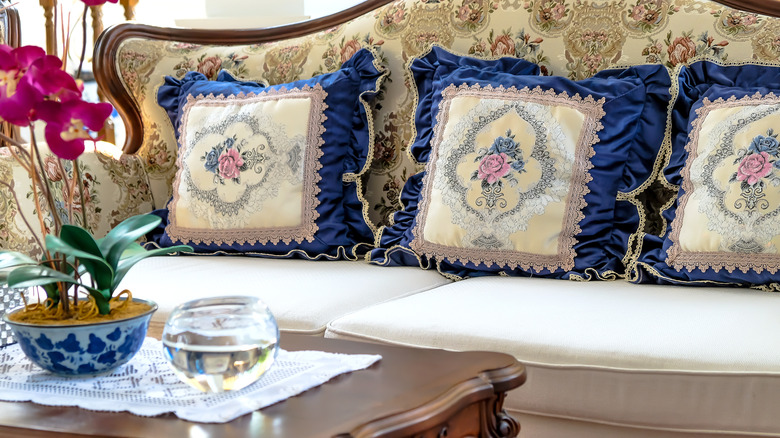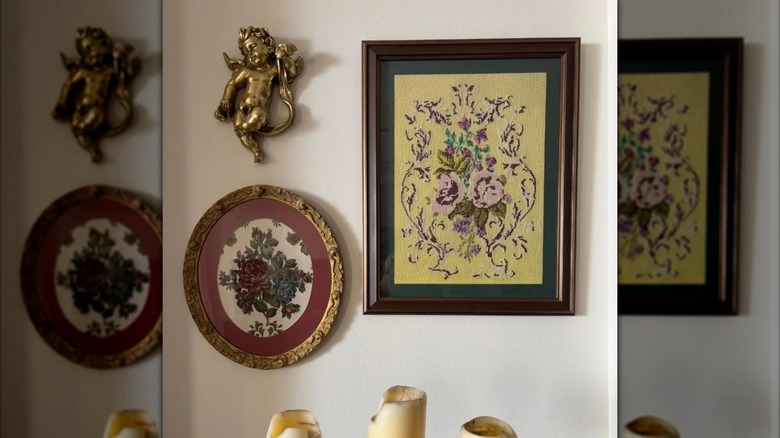Thrift Vintage Pillow Covers For Affordable Custom DIY Art
Vintage pillow covers are eye-catchers. With their intricate patterns, embroideries, bold florals, and fun prints, they're enough to tempt any vintage lover wandering through the aisles of a thrift shop. The only problem is figuring out where to put them all. If your couches, chairs, and beds are already overflowing with decorative pillows, it might be time to think outside the box. With a simple and affordable DIY, you can turn vintage pillow covers into custom wall art. That's right: No one said pillow covers have to live on a couch. When framed and hung on a wall, they can transform into one-of-a-kind pieces that look unique and stylish.
The idea for this DIY is to use a cushion cover and frame it. Squeezed flat in the frame, it will look like a stunning piece of wall art. Even though it's behind a glass panel, the fabric's texture will shine through and create something that looks nothing like your average print or poster. Pair these vintage pillow cases with valuable antique picture frames from the thrift store for a stunning, old-timey look.
Framed textiles add warmth and personality to your interior decor. You can do this even if you haven't thrifted any cushion covers, for example, by reusing old pillowcases that you'd otherwise throw out. And this technique works with other textiles, such as scarves, flags, or quilts, which you can also frame for some home decor. That's a wonderful way to showcase pieces of fabric that hold sentimental value but can no longer be used, like pieces from clothing or a baby blanket, for example.
How to frame a pillow cover
To start this DIY, lay the cover flat on the ground and measure it. If you've thrifted an actual cushion, rather than just a case, look for the opening and remove the stuffing. If there is no opening, carefully cut along the side of the pillow cover, on the back of the pillow (whichever side won't show in the frame), and remove the stuffing through the slit. And remember, you can repurpose old cushions around the home with other DIYs.
Then, you'll need to find a frame that matches the cushion cover. If you'd like to keep the cushion cover intact and avoid cutting into it, make sure to find a frame that's large enough to fit it completely. If you don't mind cutting excess fabric from the pillow cover, it can be smaller. The assembly of the frame will be different depending on which of these approaches you take.
If the pillow is smaller than the frame, you'll need to use decorative paper, cardboard, or fabric to cover the frame's backing board. This layer will be visible around the pillow case, so you can choose colors that match it, or go the white or black route for something simpler. If, however, the cushion is larger than the frame, you can skip this step and fill the entire thing, letting some of the fabric poke through at the back of the frame. With a pair of scissors, simply cut the excess fabric once everything is in place. This will be hidden behind the frame, so there's no need to be excessively precise. Now, all that's left to is hang your framed cushion case on a wall and admire it.

